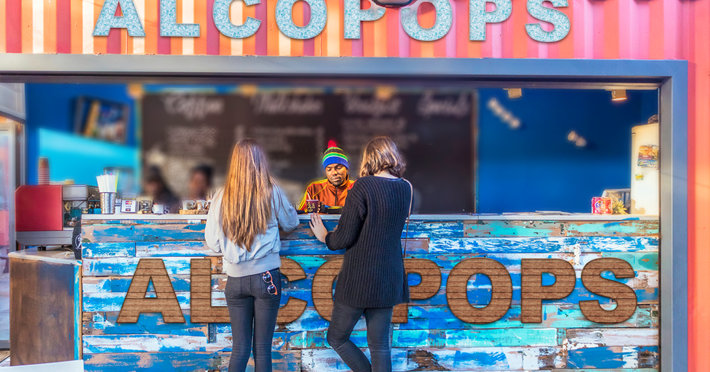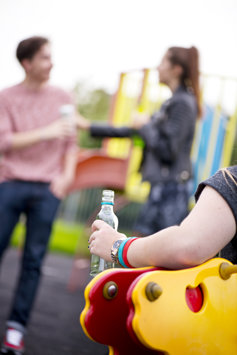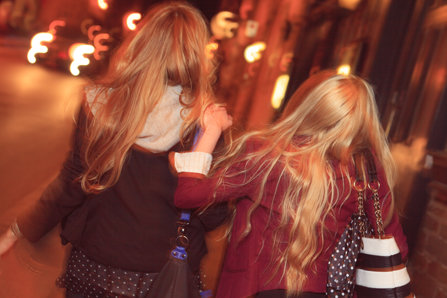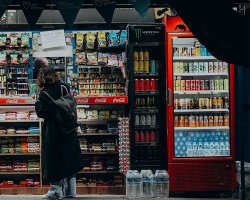Supersized Alcopops – A Dangerous Alcoholic Beverage Marketed to Underage Consumers

A Drug and Alcohol Dependence study shows that a significant percentage of alcohol poisonings from supersized alcopops occur among underage drinkers (46%). This information is alarming, and it raises the question of whether or not supersized alcopops are intentionally made and marketed towards underage consumers.
What are supersized alcopops? And should such a product even be on the shelves if close to half of the consumers who are poisoned by it are not even legally old enough to consume it?
What is Alcopop?

An alcopop is an alcoholic beverage that combines the sweet, sugary characteristics of pop, lemonade, or sweet tea with alcohol. From the Center for Applied Research Solutions, “’Alcopop’ is a term coined by the popular media to describe bottled alcoholic beverages that resemble sweet drinks such as soda and lemonade. It is believed that the sweetness of alcopops appeals to younger drinkers more readily than the taste of wine or beer, and may be a contributing factor in overall underage binge drinking.” The intentional sweetness and sugary aspect of alcopops are just one of many characteristics that make this particular beverage more favorable among youths.
Examples of alcopops include:
- Smirnoff Ice
- Smirnoff Twisted V
- Bartles & Jaymes
- Mike’s Hard Lemonade
- Bacardi Silver
- Skyy Blue
- Seagram’s Coolers
- Zima
- Jack Daniel’s Country Coolers
- Lynchburg Lemonade
- Hard Cola
- White Claw
- Sparks
A supersized alcopop is simply a sweetened alcoholic beverage that contains a significantly larger volume of alcohol than a normal serving. Some supersized alcopops may contain 5.5 standard alcoholic drinks or more, meaning that consuming just one such can of supersized alcopop would constitute excessive drinking, per the National Institute on Alcohol Abuse and Alcoholism (more on that later).
Almost Half of All Alcohol Poisoning Cases Related to Supersized Alcopops Occur Among Underage Drinkers
A May 2021 study published in the journal Drug and Alcohol Dependence revealed a concerning trend. According to the authors, “Between 2010 and 2019, poison control centers received 1,719 calls for exposures to supersized alcopops. Nearly one-half of calls involving supersized alcopop consumption (46.3 %) were made for consumers who were below the legal drinking age. In all years, the proportion of calls for supersized alcopops that were for underage exposures greatly exceeded the proportion of calls that were for underage exposures for other types of alcohol.” Supersized alcopops pose a serious risk to people who should not even be drinking them.
“A number of studies we’ve conducted have shown that supersized alcopops are commonly consumed by underage drinkers, which often results in serious negative consequences.”
The study authors are so convinced that supersized alcopops pose a direct threat to underage drinkers that they insisted something be done to regulate the products better. Quoting Dr. Matthew Rossheim, “A number of studies we’ve conducted have shown that supersized alcopops are commonly consumed by underage drinkers, which often results in serious negative consequences. Our latest data show a clear trend of supersized alcopop consumption among underage young people requiring poison center services. In this way, supersized alcopops appear to pose a distinct threat to youth. Better regulation and policies are urgently needed. Limiting their alcohol content and retail availability are immediate steps regulators must take in order to protect our youth.” He’s right. To protect young people, alcohol manufacturers must be held accountable for their products.

A Marketing Campaign That Appeals to Youths
It’s difficult to deny that alcopop manufacturers create marketing campaigns that excite and interest young people. Alcopops are sweet, fizzy, flavorful drinks that are often blended so that the drinker cannot taste the bitterness of the alcohol. The beverages closely resemble soda, lemonade, or tea, and the branding and packaging are colorful and cartoon-like. As the Alcohol Justice Industry Watchdog wrote, “They (alcopops) closely resemble soda or energy drinks, and many contain up to 12% ABV [alcohol by volume]. Alcopops are the industry's transition for youth (especially girls), from soda to alcohol, fueling alcohol-related harm.” While it cannot be proven directly, there is reason to believe that alcohol manufacturers intentionally create and market supersized alcopops to underage consumers.
The Alcohol Justice Industry Watchdog also chronicled the history of supersized alcopops, exposing how the alcohol industry conveniently released these products immediately after alcoholic energy drinks were outlawed. Alcoholic energy drinks were primarily outlawed because underage people were drinking them and being harmed as a result. Again quoting the AJIW, “The first generation of alcopops contained about 5% alcohol by volume. Recently, alcopop producers have pushed their alcohol levels to 12% or more. Supersized alcopops (the latest rendition of this product that emerged when alcoholic energy drinks were outlawed) are packaged and marketed as single-serve, ready-to-drink alcoholic beverages. They are typically 24 ounces and have a high alcohol content (up to 12% by volume), the equivalent of 4.7 servings of alcohol.” Some supersized alcopops contain more than five standard drinks, which is more than any man or woman should consume on any given day.
The Considerable Danger of Underage Binge Drinking

Underage alcohol consumption is harmful, and underage binge drinking is even worse. According to the Alcohol Justice Industry Watchdog, “Alcopops fuel the epidemic of underage drinking. Because they don’t taste, smell, or look like alcohol, alcopops serve as a transition or bridge from soft drinks to alcohol, especially for young girls. Underage girls drink alcopops more than any other type of alcoholic beverage. While the industry says these drinks are intended for adults, women 21 and older rank alcopops as their least consumed alcoholic beverage. About one-third of teenage girls ages 12 to 18, and one-fifth of teenage boys, have tried alcopops.” Of all the different types of alcoholic beverages, alcopops seem most likely to be consumed by underage boys and girls, bringing into question whether or not alcohol manufacturers should be allowed to produce them.
According to the National Institute on Alcohol Abuse and Alcoholism, about 25% of Americans over 18 binge drink every month. About 4.2 million young people between the ages of 12 and 20 binge drink every month. That figure represents at least 11% of the population of this youth age group.
The NIAAA defines binge drinking as “A pattern of drinking that brings BAC levels to 0.08 g/dL or higher. This typically occurs after a woman consumes 4 drinks or a man consumes 5 drinks—in about 2 hours.” If supersized alcopops contain more than 4 or 5 standard drinks in just one can, it becomes clear that consuming just one supersized alcopop constitutes binge drinking.
There is no doubt that alcohol consumption, particularly binge drinking, is extremely harmful to young people. Research has shown that alcohol use in one’s teen years can interfere with normal adolescent brain development, increasing the risk of the individual developing an alcohol addiction. Underage drinking has acute harmful consequences, too, such as injuries, car accidents, sexual assaults, alcohol overdoses, and deaths.
Thousands of people under the age of 21 die from alcohol-related causes every year, including over 1,000 deaths from motor vehicle crashes, about 1,000 homicides, 208 alcohol overdoses, falls, burns, and drownings, and almost 600 alcohol-related suicides.
Given the serious harm that alcohol consumption poses to young people, it would be wise to take dedicated efforts to prevent young adults and adolescents from consuming supersized alcopops.
Preventing Alcohol Misuse and Treating Alcohol Addiction Among Young People
Families (parents in particular), educators, public health officials, policymakers, and consumers must demand that alcohol companies cease making products that pose a distinct risk to young people. Furthermore, young people need to be properly informed about the risks and dangers of alcohol. When youths know the truth about how alcohol can harm their lives and negatively impact their futures, they’re less likely to experiment.
And finally, if a young person begins misusing alcohol and cannot stop doing so, they need to seek the help of a residential drug and alcohol addiction treatment center as soon as possible.
Sources:
- http://www.youthbingedrinking.org/facts/d_alcopops.html
- https://doi.org/10.1016/j.drugalcdep.2021.108657
- https://www.sciencedaily.com/releases/2021/03/210325115329.htm
- https://www.niaaa.nih.gov/publications/brochures-and-fact-sheets/alcohol-facts-and-statistics


 ®
®